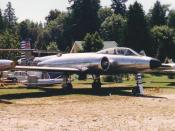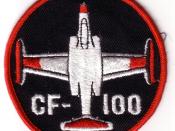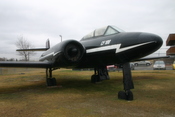CF 100 "Canuck"
The RCAF named the CF-100 "Canuck", after the much earlier name Curtis JN-4 Canuck trainer of the First World War. The name was never really accepted for the jet aircraft and the crews more often referred to the type as the 'Clunk' or the 'Lead Sled'. The CF 100 was the RCAF's second operational jet fighter replacing the De Havilland Vampire. The twin-engine jet, and all-weather interceptor was an all Canadian designed and build. The CF-100 has excellent fire control and radar systems, an acceptable climb, a twin-engine reliability, and an all weather capability. This made the aircraft highly suitable for Canadian and NATO air-defense. It played many roles in the Korean and Cold War eras. From 1953-1981 the "Canuck" patrolled over Western Europe and North America. Their job was to intercept the Soviet aircrafts that attacked Canadian and Allied airspace.
Avro Canada designed and built Canada's CF 100. The orenda jets, and all-weather interceptor with a long range and powerful radar it was the ideal northern American defense plane. It was probably the best all weather fighter of it's time. The role of this plane would be as a fighter and as an EW trainer. It served in the RCAF and in the CF. The CF 100's also served in Europe, with the Canadian and Belgium units. All of the CF 100's are now retired and they are used for a series of events. Firstly, some were fitted as target tugs, and the others were fitted as electronic countermeasures equipment. The last CF 100 retired in September 1981, and there had been 692 had been built.
This plane can carry 2 people. The pilot and the navigator, both of which are in ejection seats. The fastest it can go is nine hundred seventy-two...


